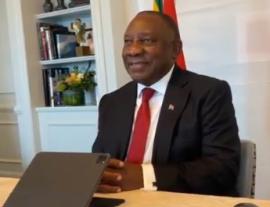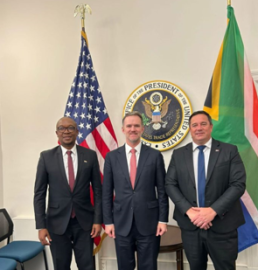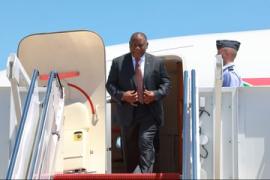Interview: U.S. tariffs to backfire before reindustrialization begins, economist warns-Xinhua
BERLIN, May 21 (Xinhua) -- Washington's attempt to rebuild its manufacturing base through sweeping tariffs may be backfiring, potentially hurting American consumers and businesses before any real industrial revival can take root, a German economist has warned.
The tariff hikes imposed by the U.S. administration have created global instability without laying the foundation for genuine reindustrialization, Wolfram Elsner, professor emeritus at the University of Bremen in Germany, told Xinhua in an interview.
"Recent U.S. tariff policies have shown the potential of disrupting international economic and trade structures," Elsner said. "They have already generated uncertainty and anxieties among companies, governments and citizens worldwide."
U.S. officials have taken the tariffs as a means to reduce trade deficits with much of the world. However, the economist argued that these measures, which aim in part to reshore manufacturing to the United States, reflect a fundamental misunderstanding of today's global value chains.
Take China as an example. Elsner explained that many of the goods the United States imports from China are, in fact, produced by American companies operating there.
The decline in U.S. exports of industrial commodities to China is not the result of external trade barriers, but rather the strategic localization of production by American companies in China, he said.
"China has built highly efficient production conditions," Elsner observed. In this context, U.S. firms have established entire value-added chains in China, benefiting from industrial clusters, skilled labor, robust infrastructure and innovation ecosystems -- resources that are currently lacking in the United States.
The same logic applies to European and German companies, many of which have built "autarkic" production networks in China, becoming competitors in their home and third-country markets.
While U.S. policymakers hope tariffs will bring jobs and factories back to America, Elsner deems that vision "simply impossible."
"Reindustrialization in the United States would require a decades-long, multidimensional effort," he said, pointing to the need for investment in education -- from primary schools to universities -- to train skilled workers and engineers, along with investments in infrastructure, industrial policy and a capable state.
Such an undertaking, he said, will be "demanding" after nearly fifty years of neoliberal disinvestment and deindustrialization.
"Generally, you cannot repair a Swiss watch with a sledgehammer," he said, doubting the effectiveness of tariffs, even when combined with subsidies, as a solution to complex economic problems. "The U.S. would need a complex developmental or entrepreneurial state with a long-term rebuilding strategy."
While tariffs might spur some reinvestment, Elsner warned that the broader macroeconomic consequences -- including higher inflation and harmful distributional effects as trade becomes increasingly restricted -- could push the U.S. economy into stagflation or even recession before any positive outcomes are realized.
"U.S. companies and consumers have price-inelastic demand for many Chinese goods," Elsner noted. "These products are indispensable and have no substitutes, so Americans end up bearing the cost of the tariffs, as was already the case under Donald Trump's first term."
He cautioned that, amid these inflationary pressures, the Federal Reserve may hesitate to cut interest rates, which would further dampen growth. Meanwhile, rising public debt and high Treasury yields could put additional strain on fiscal policy.
"A global de-dollarization trend and broader stock market devaluations may then combine into 'a dangerous cocktail' that the government may no longer be able to handle," he concluded.■







